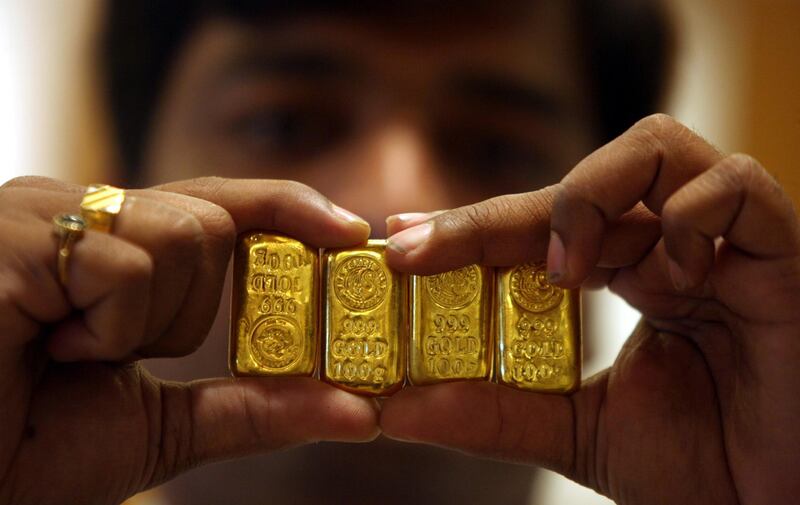Precious metals continued building on their impressive performance in July.
Since my last column, gold for immediate delivery hit a high of $2,075 (Dh7,620) a troy ounce while silver peaked at $29.84. At the time of writing, both have corrected 3.4 per cent and 5.4 per cent respectively since those early August highs.
The interest in precious metals remains high but a recent downtick in the weekly Commodities Futures Trading Commission Commitment (CFTC) traders report would suggest the rate at which the markets are building long positions since mid-June has started to slow.
Fundamentally, nothing has changed for precious metals – continued struggles for the greenback have kept metals well bought in the interim. But a look at the relative strength index (RSI), a key technical momentum indicator, would suggest that metals are gearing up for a correction in the short term. Typically, an RSI at 70 or above would suggest the asset is overbought while a reading at 30 or below suggests an asset is under-bought.
In the first weeks of August, gold hit a daily RSI as high as 87. This would suggest that building gold positions at current levels may prove too risky. I would keep an eye out on how the CFTC COT (commitments of traders) positioning changes this week as well as how the RSI fares in the days ahead. I expect gold for immediate delivery to test $1,905 levels in the weeks ahead, while $2,070 remains the upside resistance in the short term.
The US Dollar Index has moved back above 93.50 levels at the time of writing. This was after it hit as low as 92.50 during the month. As I suggested in my last article, I am pausing my dollar bias for the interim. While the index has corrected more than 4 per cent since the start of July, there are many factors that will decide the medium-term movement of the US dollar.
Democrats and Republicans are still debating a second coronavirus package after reaching an impasse and missing the deadline at the end of last week. While Democrats have backed a $3.5 trillion package, Republicans are eyeing a package in the region of $1tn and this exposes the gap in cross-the-aisle US party politics.
A swift resolution could see interest coming into the US dollar and other asset classes. Along with these political developments, I am also watching for some key US data points that will give more insight on how the US economy is dealing with the Covid-19 fallout.
US inflation data, due out later today, is expected to show that core prices increased 0.2 per cent month-on-month and rose 1.1 per cent on an annual basis. This Friday, I will watch for US industrial production figures, expected to increase by 3 per cent month-on-month, as well as US manufacturing data due on August 21.
Across the pond, the EUR/USD pairing fell short of my $1.20 target, capping out at $1.1915 levels. Since then, the common currency has retraced back below $1.1750 levels at the time of writing. The move lower could accelerate if the common currency closes below $1.17 levels in the short term. However, any downsides below $1.1650 are unlikely with the dollar trend still unclear.
The GBP/USD pairing continues its consolidation above $1.30 levels and I expect to see another run towards $1.32 levels in the month ahead.
To round up, the key economic data points through August include China releasing its industrial production figures on August 14, while German and euroarea manufacturing PMI data will be released on August 21.
Gaurav Kashyap is a market strategist at Equiti Global Markets. The views and opinions expressed in this article are those of the author and do not reflect the views of Equiti








